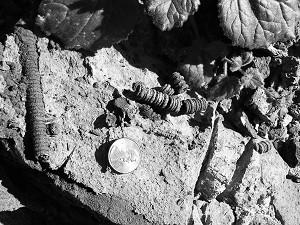For decades, poor farmers in China’s northwest have been eking out a living by digging for fossil bones and selling them to Chinese apothecaries. The fossils are believed to be dragon bones and are thought to have magical healing properties, hence their high demand in Chinese medicine. Now thousands of tons of the fossils have disappeared.
Hong Kong’s Wenwei Daily reported that many Palaeozoic fossils had been found in Tongxin county of Ningxia Autonomous Region. Local farmers first found these fossils or “dragon bones” while digging the sands in the dry mountainous area.
In 1952, experts confirmed that the fossils unearthed in Tongxin County were from the Palaeozoic era. The fossils were from the stegodon, mastodon, rhinoceros, boar, stephanocemas, hipparion, antelope, gibbon and other carnivorous animals.
Thousands of Tons of Fossils have Disappeared
In the 1980s, some local Chinese medicine agencies publicly purchased fossil fragments as medicine. Tens of thousands of farmers in the Tongxin County stopped farming and started to dig for the fossils in the mountains. Tongxin County was the center of the fossil market. Now, decades later, farmers still illegally dig and trade the fossils.
Incomplete statistics show that more than twenty thousand kilograms of fossils have been unearthed each year in Tongxin County since 1977; most of them were sold illegally by individuals. After decades of digging, thousands of tons of fossils have disappeared.
No Other Choice but to Dig for “Dragon Bones”
Much of Ningxia Autonomous Region has become desert due to prolonged droughts, and is considered to be one of the least inhabitable areas by the United Nations Educational, Scientific and Cultural Organization.
The area producing the fossils is the poorest area in the county. Many people rely on digging for fossils for their livelihood, although it is a very dangerous occupation. The farmers dig holes in the sand and rock without any support and could die at any time if the hole collapses. At least 20 people have died digging for fossils in the county since the 1980s according to the Tongxin County Cultural Relics Administration Center.
Despite the danger, the farmers continue to dig for fossils because they have no alternative source of income. Drought destroyed 90 per cent of the arable farm land and the young laborers all left to find work elsewhere. Digging and selling the fossils is the only option for those left behind.





